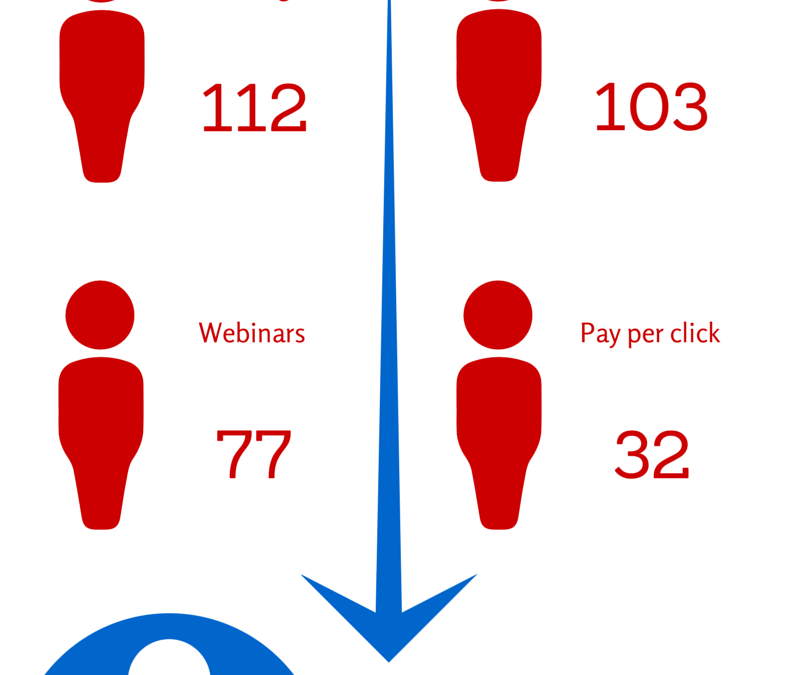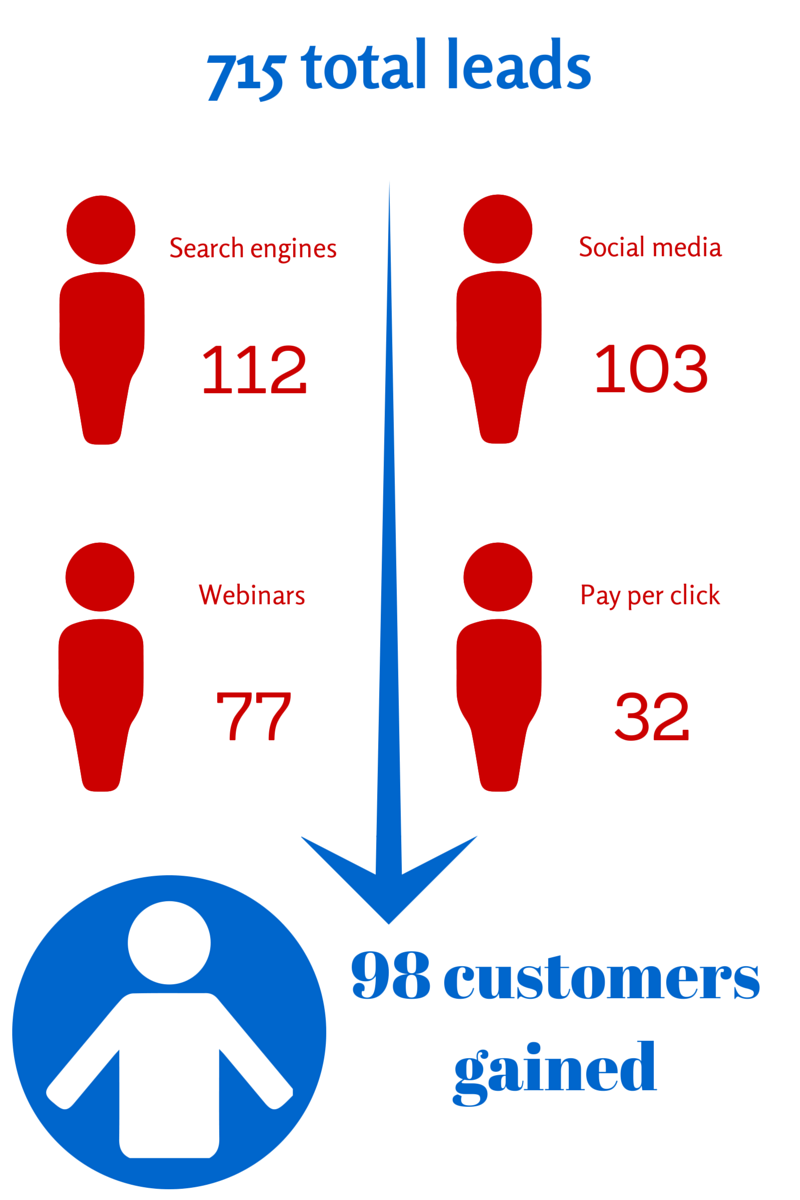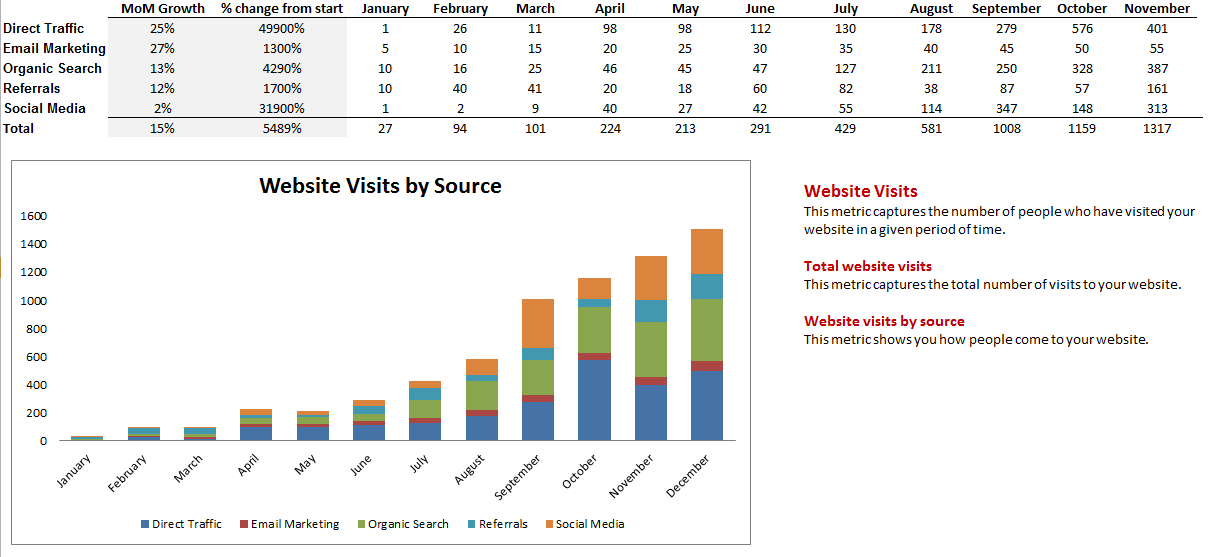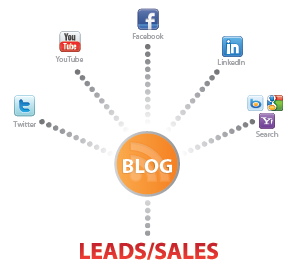
by Fronetics | Nov 18, 2014 | Blog, Logistics, Marketing
 Cerasis is a top North American third party logistics company offering logistics solutions with a strong focus on LTL freight management. In 2012 the company decided to move from a traditional approach to marketing (ads in print publications and a heavy reliance on referrals) to a digital strategy – inbound marketing.
Cerasis is a top North American third party logistics company offering logistics solutions with a strong focus on LTL freight management. In 2012 the company decided to move from a traditional approach to marketing (ads in print publications and a heavy reliance on referrals) to a digital strategy – inbound marketing.
Within 25 months:
- Visits to the Cerasis website increased by 1,141%;
- Visits to the company blog increased from zero to 46,404;
- Traffic driven by social media increased by 376,150%;
- Organic traffic increased by 4,066%.
Moreover, Cerasis gained 715 leads. Fourteen percent of these leads converted to customers. The 98 new customers Cerasis gained through their inbound marketing efforts generated a 14% increase in revenue.
To learn more about Cerasis’ approach to inbound marketing and for more results, download the case study: 3PL company Cerasis acquires 98 customers through inbound marketing.

by Fronetics | Nov 18, 2014 | Blog, Logistics, Marketing
 Cerasis is a top North American third party logistics company offering logistics solutions with a strong focus on LTL freight management. In 2012 the company decided to move from a traditional approach to marketing (ads in print publications and a heavy reliance on referrals) to a digital strategy – inbound marketing.
Cerasis is a top North American third party logistics company offering logistics solutions with a strong focus on LTL freight management. In 2012 the company decided to move from a traditional approach to marketing (ads in print publications and a heavy reliance on referrals) to a digital strategy – inbound marketing.
Within 25 months:
- Visits to the Cerasis website increased by 1,141%;
- Visits to the company blog increased from zero to 46,404;
- Traffic driven by social media increased by 376,150%;
- Organic traffic increased by 4,066%.
Moreover, Cerasis gained 715 leads. Fourteen percent of these leads converted to customers. The 98 new customers Cerasis gained through their inbound marketing efforts generated a 14% increase in revenue.
To learn more about Cerasis’ approach to inbound marketing and for more results, download the case study: 3PL company Cerasis acquires 98 customers through inbound marketing.

by Fronetics | Sep 2, 2014 | Blog, Content Marketing, Data/Analytics, Marketing, Supply Chain

To grow your B2B business you need to take a comprehensive data driven approach to marketing. Metrics enable you to measure success, drive strategy, and demonstrate the ROI of your marketing efforts.
What metrics should you track?
Given that your objective is to attract, acquire, and retain customers, the most effective metrics to track are those where the unit of focus is the prospect, lead, or customer. These include the following:
Visits
Visits capture the number of visitors to your company’s website in a given period of time. In addition to tracking the total number of visits, it is also important to track visits by source. That is, how visitors come to your website. Sources typically include direct traffic, organic search, referrals, social media, and email marketing.
Reach
Reach is the number of people who can be reached through your marketing channels (e.g. LinkedIn, Twitter, and Facebook). This metric is a good indicator of how well the content you are publishing attracts new people to your network, and how well the content engages people within your network. In addition to tracking your company’s total reach (the total number of people you can reach across all channels), you should also track reach by channel.
Leads
Leads are one of the strongest indicators of ROI. By tracking leads by source, you can identify where your marketing efforts are most effective, areas where you can improve, and areas you could eliminate from your strategy.
Customers
Customers are also a strong indicator of ROI. Like leads, customers should be tracked by source.
Conversion rates
Conversion rates measure the percentage of people who are moving from one marketing stage to the next. An increase in your conversion rates implies an improvement in the quality of your content and/or traffic. You should track the visit-to-lead conversion rate (How many of your website visitors are becoming new leads?) as well as the lead-to-customer conversion rate (Are you generating sales-ready leads?).
Ranking
Ranking matters. The top listing in Google’s organic search results receives 33 percent of the traffic compared to 18 percent in the second position. Two metrics you can track are your domain authority and your marketing grade.
Domain authority is a score ranging from 1 to 100 that represents how well a website will perform in a search engine ranking. The lower the score – the less likely it will be found. Marketing grade is a holistic measure of a site’s online presence as measured by HubSpot’s Marketing Grader on a scale of 0-100. A higher score is better.
How to track metrics for success
Having an established database to capture your marketing metrics is critical to success. We created a template that you can download and use to track your metrics, measure success, and drive strategy. One of the great features about this template is that it generates graphs that can be used in your reports and presentations.



by Jennifer Hart Yim | May 6, 2014 | Blog, Content Marketing, Marketing, Social Media, Strategy
This is the second in a series of blog posts written by Adam Robinson, Director of Marketing at Cerasis. Founded in 1997, Cerasis is a top freight logistics company and truckload freight broker.
#1: What are your Marketing Objectives?
The following were the marketing objectives we decided for the Cerasis marketing strategy:
- Create a consistent marketing program of brand awareness campaigns and multi-channel marketing platforms in order to gain leads and sales from a more sophisticated and larger shipper.
- Achieve market perception as a thought leader in the logistics industry through consistent content marketing.
As part of our strategic plan, the Cerasis website and blog is the hub of the entire process. Every marketing element’s purpose is to (a) build brand awareness, (b) build community, and (c) drive traffic from those elements to the blog and website. This is important for several reasons:
- We are in total control of our website content, messaging, and engagement.
- Our blog and website is the best place for inbound lead generation.
- Blog content lasts longer than posts within the realm of social media and other traditional channels such as advertising in a magazine.
- A blog is the best place for sharing your story and showing expertise.

#2: Understanding Content Marketing and the Approach
Consumers of any product or service work through a process that starts with becoming aware of a need and ends with making a decision to purchase or not to purchase (Universal Marketing Funnel). Because of our marketing efforts, at any given moment in time Cerasis will have potential customers considering our company within various stages of the decision process. Our content marketing strategy will focus on building content that communicates with these prospective customers no matter where they are in their decision journey with Cerasis.
- Awareness – This is the stage in which a potential customer becomes aware that your company exists. Of the content you create, 30 percent to 40 percent will be for the purposes of awareness — making potential customers aware of your company and exposing you to your target market. Awareness content focuses on trends, education of best practices, and is completely devoid of over salesy messaging.
- Evaluation – This is the stage in which potential customers are in the market for what you are selling and they are trying to formulate their buying criteria. Like the awareness stage, 30 percent to 40 percent of our content will be focused on helping the customer evaluate your offering. Try and create content which evaluates your type of business vs. another. Another good example is iPhone vs. Android.
- Decision – Decision-based content that communicates why a customer should buy from Cerasis will represent about 20 percent of our content strategy. This kind of content is not overtly salesy, but is in line with your strengths and unique selling proposition
- Fanatic – This is content that is mostly user generated from your customer base and brand loyalists. These are in the form of testimonial, case studies, and guest blogs. This kind of content is about you, but from someone else’s perspective.
#3: Target Audience Establishment and Research
Of course if you want to even have results in social media and content marketing, you have to understand who you are trying to reach. It’s important to think holistically when considering who you are trying to reach at a potential prospects’ company. Typically, your target audience falls into two categories: Primary (decision makers) and Secondary (influencers of the decision maker), but there could also be Tertiary (these are the vetters; admins, executive assistants, and those gathering info to present to the group, usually in a B2B environment).
When thinking about your target audience, think of the following:
- Broad Categories: Think of the different verticals you can support. For example, a logistics company may want to reach those in the industries of Manufacturing, Supply Chain, Logistics, Transportation, Distribution and Freight. Let the categories be your guide for when you are joining digital communities or writing content you will then distribute in these communities.
- Job Titles: Next, ask the sales staff who they typically must talk to in order to get a signed contract. Typically, the person who signs the check, or the contract, is in leadership and makes the ultimate decision. This may be a CFO of a manufacturing company, or a Manager of some sort. Then, ask the customer service reps who fulfill your service or product offering who they deal with at your customers’ companies. For example, it may be Account Manager. Then, finally, continue to ask if there are other job titles that make sense. You can use these job titles to find communities easily on LinkedIn.
- Search Engine Key Phrases: To complete your list of your target audience, next go to Google.com and search some of these job titles to find related job titles, which you can find at the bottom of the search page. You may also use Google’s free Keyword Tool, plugin the job titles, and see related key phrases to those job titles.
More Action Items with this information:
- Start researching what kind of content is relevant to these job titles and industries in preparation for your content planning session
- Identify popular news sources, people, and blogs from which you may draw inspiration, establish key relationship for future guest blogging or networking, and of course in curation of content of value to your target audience to spur community growth and engagement in platforms such as LinkedIn, Facebook, Google+, or Twitter.
#4: Understanding Digital Assets, Social Media Platforms, and Online Communities Activation
Digital Assets
Digital assets are online environments you create from scratch. Digital assets are often created using a technology framework, a hierarchy of navigation, your company logo and custom graphics, and professional copy writing. The major digital assets you should consider when getting ready to activate your content marketing strategy are Website, Company Blog, Landing Pages, Videos, Podcasts.
Social Media Platforms
In general, most social media platforms you set up require you to amass a following in order to be effective. There are some platforms where the entire reason you establish it in the first place is to build followers, and then add value in the way of posts or messages or use to distribute your original content in order to lead back your desired target audience to your digital assets in order to gain awareness and inbound leads. The following are the major social media platforms, what they are, and what they may be used for:
- LinkedIn Company Page: A LinkedIn company page allows you to post information about your company such as founding date, about section, post location information, hours, products and services, job postings, and allow employees to list the company page within their own individual profiles. The page is used for marketing by accruing followers and post messages, such as your own original content, which reach those followers. LinkedIn offers great analytics around how many people were reached with your posts, how many clicks you receive, and how many followers you have gained over time. Company pages are a great way to find out company intelligence such as key decision makers.
o USES: Typically, a LinkedIn page is most effective in a business-to-business environment, as the mindset of the users on LinkedIn are for either finding jobs, finding information on their industry of choice, or consuming content distributed or curated by companies. Aid in the vetting process of potential clients who look up your company via search engines or LinkedIn search, aids in establishing credibility with target audience, reach your followers through consistent, relevant, and remarkable content, promote products and services, stay in touch with employees
- LinkedIn Profile: LinkedIn gives you the keys to controlling your online identity. Have you Googled yourself lately? You never know what may come up. LinkedIn profiles rise to the top of search results, letting you control the first impression people get when searching for you online.
o USES: Again, a profile, when used for digital marketing, is friendlier in a B2B environment, over a business-to-consumer (B2C) geared marketing campaign. The LinkedIn profile allows you to build awareness of yourself and company through consistent posting, serve as a repository for your own personal brand, join LinkedIn groups through your profile, search engine optimize your profile for increased visibility, gain valuable market insight through LinkedIn Today, build connections with your desired target audience
- Twitter: Twitter is an information network that brings people closer to what’s important to them. Every day, millions of people turn to Twitter to connect to their interests, to share information, and find out what’s happening in the world right now. Anyone can read, write and share messages of up to 140 characters on Twitter. These messages, or Tweets, are available to anyone interested in reading them, whether logged in or not. Your followers receive every one of your messages in their timeline – a feed of all the accounts they have subscribed to or followed on Twitter. This unique combination of open, public, and unfiltered Tweets delivered in a simple, standardized 140-character unit, allows Twitter users to share and discover what’s happening on any device in real time.
o USES: Think of Twitter as a consumption platform. Consumption of industry news and original opinionated content. In this way, it is great for B2B marketing. If using for B2C, it works well to extend brand affinity by creating campaigns or using branded hashtags for those who want to follow your company. Unlike a LinkedIn company page and a bit different than requesting a LinkedIn connection, you can follow other thought leaders, or those in your target audience to elicit a follow back. Additionally, Twitter is highly searchable via key word to find and follow those in your target audience or those talking about your products and services. Furthermore, Twitter aids in Search Engine Optimization through sharing your content, show thought leadership and attract your target audience by using strategic hashtags and curating industry news, consume industry news gaining valuable insights, gain inbound leads via content marketing by tweeting your original content, gain followers to increase brand awareness and chances of inbound leads
- Facebook Page: A Facebook Page, much like a LinkedIn Company Page allows you to include your company information, match your graphics to your website, include store locations, hours, mission and value statements, and categorize your business. In order to amass a following people must “Like” your page. Once they do, you can then hope to reach them with your posts. Unlike LinkedIn however, Facebook posts from a page only reach 10-16% of those who “Like” your page, thanks to Facebook’s “Edge Rank” an algorithm designed to declutter your personal Facebook Feed when you login.
o USES: Facebook often times is leveraged in a more B2C environment, but can be wildly successful in B2B if you know the power of a business Facebook’s ability to “Like” another Facebook business page, and thus still receive the posts from the page, hopefully reaching your desired target audiences. Furthermore, you can use Facebook to create Events, which you can promote and gain RSVPs, you can run contests via Facebook ads to increase awareness of your brand, curate and post original content to show your thought leadership, leverage the Facebook Ad platform to target Facebook users who are within your target audience with great precision, and ultimately, through pictures and video, you are able to show the personality of your business via Facebook.
- Google+: Is a social network owned by Google. If you have a google account, you already have a Google+ profile. There are Google+ individual profiles and Google+ Pages. Google views it as a social layer to compliment it’s other products of search, advertising, Gmail, maps, and Google Places (local listings). With a profile or a page, you can amass “Followers” here as well, whenever another Google+ user adds you to their circles.
o USES: Google owns Google+, so you must understand if you are wanting to have success in search engine optimization, Google+ is a must. Like a Facebook Page, you can post to your followers and they can see your posts, and +1, comment, or share on that post. The more +1s you have on your own content the more Google sees your content as trustworthy, thus uplifting your overall SEO efforts. This platform also allows you to fill in your company information, like a LinkedIn Page or Facebook Page, but here you can also connect your Google Local listing (formally known as Google Places) to your Google+ page to aid in further SEO, but also so customers may easily leave reviews and other potential customers can see your information and reviews all in one place. Finally, with a Google+ profile you can add Authorship, so that when your content does show up in search engines, your listing in the search engine stands out and increases the likelihood someone will actually click on it, as you see to the right.
- Pinterest: Pinterest is a fairly new social media platform, having come to prominence in late 2011. Pinterest allows you to create both a personal user account, as well as a business account. Pinterest is very similar to Twitter in that you can create a page and curate content. Except, instead of being driven by links and text, Pinterest is driven by images and video. A page or user can amass followers, and like twitter can follow those in your target audience to hopefully gain a follow back. One may pin your own original content or thought leadership content in the hopes to reach your target audience where they either repin or pin your content, like, comment, and more importantly click on your content.
o USES: Increase Search Engine Optimization by posting your blog and website content, build a community of followers made of your target audience, and display content in a more visual format
- YouTube: This is another platform owned by Google, and also very important in search engine optimization. Again, like many social media platforms, you are allowed to either be a user or have a company YouTube channel. As a company you can establish your channel and upload videos of original content, as well as fill out information about your company. You are able to amass subscribers and subscribe to other channels of interest. Additionally, your videos can gain likes and comments, and you may add descriptions to each video.
o USES: YouTube has applications in both B2B and B2C, and doesn’t require a lot of upkeep or posting, like some of the other platforms. YouTube primarily, in a B2B setting is used to increase search engine visibility with targeted key phrases in each video, gain subscribers of your target audience, and allows you to embed video in your digital assets as a way to make your marketing message stand out.
Online Communities
Finally, we come to online communities. Unlike digital assets and social media platforms, online communities allow you to tap into your target audience and not be at the mercy of having to amass followers or attract visitors to your brand. I am not saying you should not try and attract members of the community to your company, but you can think of online communities where you can use content of relevancy as bait to reel them back into your own controlled environments and established pages in order to support your overall marketing and business goals as laid out in your digital marketing plan. The following are the main online communities which give you broad reach:
- LinkedIn Groups: LinkedIn Groups are communities you may join within LinkedIn with your LinkedIn profile. You may search out LinkedIn groups by key word and decide to join as a member. LinkedIn will tell you the size of the group, the description, the rules of the group, who are the managers, and even the stats. You are allowed to post discussions, comment on others discussions, and after some time, post original content as you build up your influence in the group.
- USES: Increase the awarenes and raise the profile of yourself and your company through relevant discussions and engaging with other group members, gain traffic to your blog and website by posting original, relevant, and not too salesy content, increase connections with other LinkedIn users in your desired target audience, leverage deep search capability to find discussions around your products and services solutions, potentially reach hundreds of thousands of people in your target audience by joining up to 50 groups made up of your target audience.
- Google+ Communities: Google+ Communities are fairly new, but act very much like LinkedIn Groups. You can join strategic groups found by key phrase and post messages in them. You can engage with other members and add targeted users you may want to talk further with to your circles.
- USES: Primarily used to aid in SEO by posting links to your original content, allows for broad reach of your content and brand through reaching large numbers of people in each group
- Quora: Quora is a question and answer site where you can search by specific key word as well. You have to be a member, and it’s as straight forward as someone asking a question, and people offering their expert answers. Other users will then vote on the answer with the best ones being featured.
- USES: The first thing you DON’T want to do is SPAM Quora. This is the place where you simply want to provide value by answering questions related to your expertise. If it makes sense, you can post a link to your content, but this is highly frowned upon unless it truly adds value (this is why proper content marketing where you lead with value is SO IMPORTANT! More to come in future blog posts!). Once you add value and build out your influence, you can be known as “That person” who is the expert. And who doesn’t want to do business with an expert!
- Reddit: Reddit is a fantastic community, but the challenge is how large it is. Like LinkedIn Groups, there are several niche places, called subreddits, where you can simply search for your industry and post your content to. Again, like LinkedIn groups, if you don’t want to be spammy in nature, you have to be relevant and engaging. Don’t over post here, but try a piece of content once per day.
by Fronetics | Feb 3, 2014 | Blog, Marketing, Social Media
Getting 10,000 hits a week on your website may be huge accomplishment for your business (and it is), but if at the end of the week none of those hits turn into a lead how do you measure your business’ success?
Knowing which metrics you need to be paying attention to is a crucial task for your marketing team. Whether you’re using Google Analytics or another custom web application, the data that you can learn about your customers – based on their actions online – is priceless. This data will help you create the kind of content that will convert your website visitors into customers, all in good time, of course.
Here are five metrics you should be looking for and measuring in 2014:
1. Customer Engagement
How do your customers interact with the content you digitally share? Do your customers frequently engage with your company’s LinkedIn page, respond to or retweet your tweets, or comment on your blog? If the answer is yes, you have a high level of customer engagement. It’s important to stay engaged with your customers (and potential ones) through these different types of media. The more your customers are engaging with you, the better.
Ignoring negative feedback on your Facebook page, Twitter or blog can be greatly detrimental to your engagement, however. Use these platforms as a customer service tool in order to leverage them to take full advantage of the power of your channels.
2. Conversions
Driving a high volume of traffic to your site is a great way to improve your SEO ranking, build brand awareness, and most importantly, sell your product. Create a definitive way to measure your website analytics and traffic in order to track conversions from your website. If you’re not seeing as many conversions, you may need to take a step back and reevaluate your website. Keep in mind that 55 percent of customers commit to a company because of the ability to find the information or help they need. Are there calls to action on your homepage? Is there easy to find content for consumers to download? And most importantly – how prominent are these calls to action for the untrained eye of your customer to locate?
3. Profit vs Revenue
Many companies generate a significant amount of revenue over the course of a fiscal year but still find themselves coming up short and often times operating at a loss. Expenses over the course of a year may outweigh the actual net profit the company earns. Throwing money at improperly used marketing tools and signing contracts can ultimately be a waste of money. Measure the ROI of these tools to make better buying decisions and save some money.
4. Customer Satisfaction
While this may be a difficult metric to gauge, there are several ways to measure customer satisfaction, both organically and through paid tools. Customer satisfaction is also one of the most important metrics businesses need to consider in order to promote a successful business. Create surveys for customers to provide qualitative and quantitative feedback. Follow product reviews and utilize your social media channels to keep an on what your customers are saying. The value of this type of data is priceless and will help your business plan for future product launches and train customer service representatives.
5. Returning Customers
The success of your business lies on the shoulders of your customers. If your customers are happy, they will keep coming back for more. But how do you ensure that your customers remain in your sales funnel until they are ready to make a purchasing decision again? Keep in touch with them! Send special offers, newsletters and create and distribute content that will keep your customers informed about your products and your industry in order to maintain a level of engagement with them, even when they are not interested in buying something. Businesses with a high number of returning customers will ultimately experience success and growth.

 Cerasis is a top North American third party logistics company offering logistics solutions with a strong focus on LTL freight management. In 2012 the company decided to move from a traditional approach to marketing (ads in print publications and a heavy reliance on referrals) to a digital strategy – inbound marketing.
Cerasis is a top North American third party logistics company offering logistics solutions with a strong focus on LTL freight management. In 2012 the company decided to move from a traditional approach to marketing (ads in print publications and a heavy reliance on referrals) to a digital strategy – inbound marketing.




